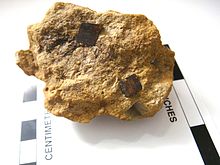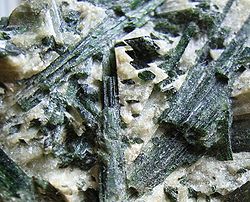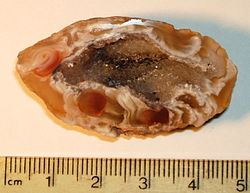- Crystal habit
-
This article is about the descriptive term used in mineralogy. For the addictive drug, see crystal methamphetamine.
Crystal habit is an overall description of the visible external shape of a mineral. This description can apply to an individual crystal or an assembly of crystals or aggregates.
In mineralogy, shape and size give rise to descriptive terms applied to the typical appearance, or habit of crystals. Each crystal can be described by how well it is formed, ranging from euhedral (perfect to near-perfect), to subhedral (moderately formed), and anhedral (poorly formed to no discernable habit seen).
The many terms used by mineralogists to describe crystal habits are useful in communicating what specimens of a particular mineral often look like. Recognizing numerous habits helps a mineralogist to identify a large number of minerals. Some habits are distinctive of certain minerals, although most minerals exhibit many differing habits (the development of a particular habit is determined by the details of the conditions during the mineral formation/crystal growth). Crystal habit may mislead the inexperienced as a mineral's internal crystal system can be hidden or disguised.
Factors influencing a crystal's habit include: a combination of two or more crystal forms; trace impurities present during growth; crystal twinning and growth conditions (i.e., heat, pressure, space); and specific growth tendencies like growth striations. Minerals belonging to the same crystal system do not necessarily exhibit the same habit. Some habits of a mineral are unique to its variety and locality: For example, while most sapphires form elongate barrel-shaped crystals, those found in Montana form stout tabular crystals. Ordinarily, the latter habit is seen only in ruby. Sapphire and ruby are both varieties of the same mineral; corundum.
Some minerals may replace other existing minerals while preserving the original's habit: this process is called pseudomorphous replacement. A classic example is tiger's eye quartz, crocidolite asbestos replaced by silica. While quartz typically forms prismatic (elongate, prism-like) crystals, in tiger's eye the original fibrous habit of crocidolite is preserved.
The names of crystal habits are derived from:
Predominant crystal faces (prism - prismatic, pyramid - pyramidal and pinacoid - platy). Crystal forms (cubic, octahedral, dodecahedral). Aggregation of crystals or aggregates (fibrous, botryoidal, radiating, massive). Crystal appearance (foliated/lamellar (layered), dendritic, bladed, acicular, lenticular, tabular (tablet shaped)).
List of crystal habits
Habit[1][2][3] Image Description Common Example(s) Acicular 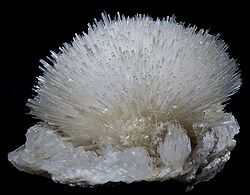
Needle-like, slender and/or tapered Natrolite, Rutile Amygdaloidal 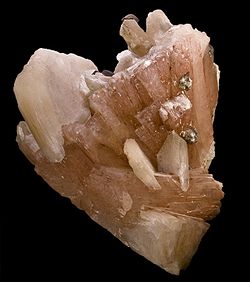
Almond-shaped Heulandite, subhedral Zircon Bladed Blade-like, slender and flattened Actinolite, Kyanite Botryoidal or globular 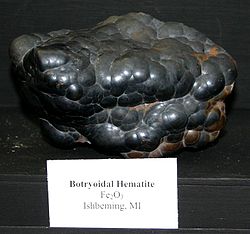
Grape-like, hemispherical masses Hematite, Pyrite, Malachite, Smithsonite, Hemimorphite, Adamite, Variscite Columnar 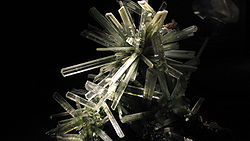
Similar to fibrous: Long, slender prisms often with parallel growth Calcite, Gypsum/Selenite Coxcomb 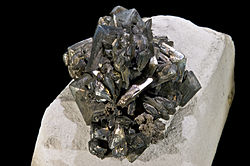
Aggregated flaky or tabular crystals closely spaced. Barite, Marcasite Cubic 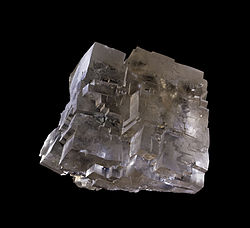
Cube shape Pyrite, Galena, Halite Dendritic or arborescent 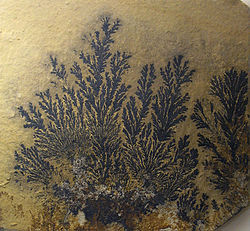
Tree-like, branching in one or more direction from central point Pyrolusite and other Mn-oxide minerals, Magnesite, native copper Dodecahedral 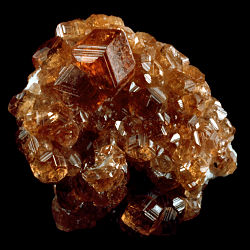
Dodecahedron, 12-sided Garnet Drusy or encrustation 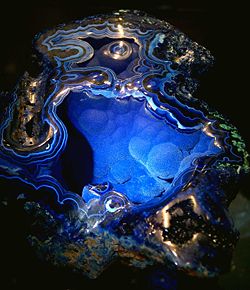
Aggregate of minute crystals coating a surface or cavity Uvarovite, Malachite, Azurite Enantiomorphic 
Mirror-image habit (i.e. crystal twinning) and optical characteristics; right- and left-handed crystals Quartz, Plagioclase, Staurolite Equant, stout 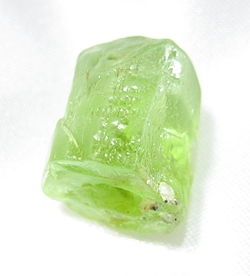
Length, width, and breadth roughly equal Olivine, Garnet Fibrous 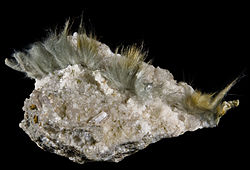
Extremely slender prisms Serpentine group, Tremolite (i.e. Asbestos) Filiform or capillary 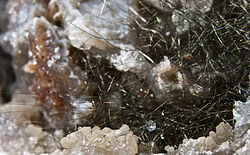
Hair-like or thread-like, extremely fine many Zeolites Foliated or micaceous or lamellar (layered) 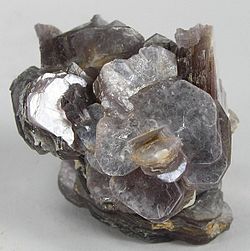
Layered structure, parting into thin sheets Mica (Muscovite, Biotite, etc.) Granular 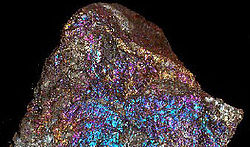
Aggregates of anhedral crystals in matrix Bornite, Scheelite Hemimorphic 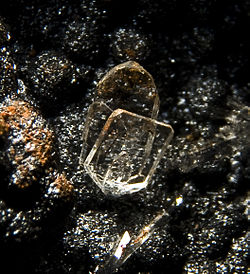
Doubly terminated crystal with two differently shaped ends. Hemimorphite, Elbaite Hexagonal Hexagon shape, six-sided Quartz, Hanksite Hopper crystals 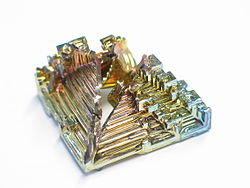
Like cubic, but outer portions of cubes grow faster than inner portions, creating a concavity Halite, Calcite, synthetic Bismuth Mamillary 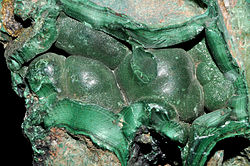
Breast-like: surface formed by intersecting partial spherical shapes, larger version of botryoidal, also concentric layered aggregates Malachite, Hematite Massive or compact 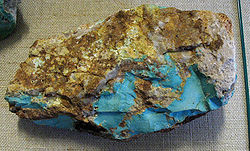
Shapeless, no distinctive external crystal shape Limonite, Turquoise, Cinnabar, Realgar Nodular or tuberose Deposit of roughly spherical form with irregular protuberances Chalcedony, various Geodes Octahedral 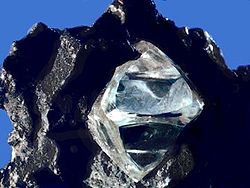
Octahedron, eight-sided (two pyramids base to base) Diamond, Magnetite Plumose 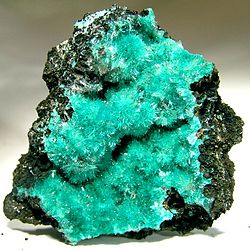
Fine, feather-like scales Aurichalcite, Boulangerite, Mottramite Prismatic 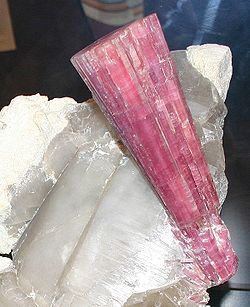
Elongate, prism-like, semi-cylidrical: crystal faces parallel to c-axis well-developed Tourmaline, Beryl Pseudo-hexagonal 
Hexagonal appearance due to cyclic twinning Aragonite, Chrysoberyl Radiating or divergent 
Radiating outward from a central point Wavellite, Pyrite suns Reniform or colloform 
Similar to botryoidal/mamillary: intersecting kidney-shaped masses Hematite, Pyrolusite, Greenockite Reticulated 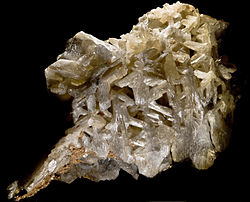
Crystals forming net-like intergrowths Cerussite Rosette or lenticular (lens shaped crystals) 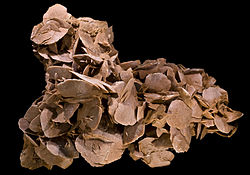
Platy, radiating rose-like aggregate Gypsum, Barite (i.e. Desert rose) Sphenoid 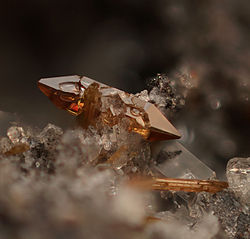
Wedge-shaped Sphene Stalactitic 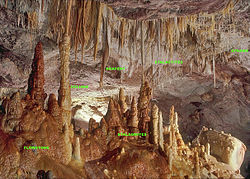
Forming as stalactites or stalagmites; cylindrical or cone-shaped Calcite, Goethite Stellate 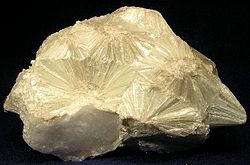
Star-like, radiating Pyrophyllite, Aragonite Striated 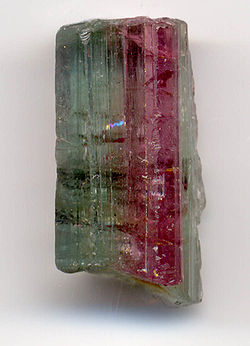
Not a habit per se, but a condition of lines that can grow on certain crystal faces on certain minerals Tourmaline, Pyrite, Quartz, Feldspar, Sphalerite Stubby or blocky or tabular 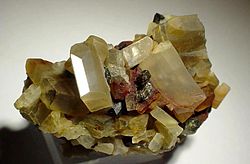
More elongated than equant, slightly longer than wide, flat tablet shaped Feldspar, Topaz Platy 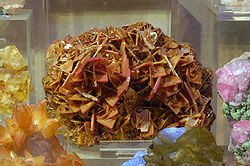
Flat, tablet-shaped, prominent pinnacoid Wulfenite Tetrahedral 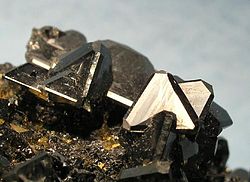
Tetrahedra-shaped crystals Tetrahedrite, Spinel, Magnetite Wheat sheaf 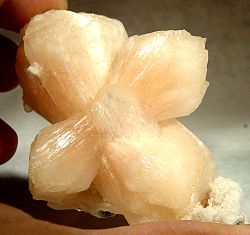
Aggregates resembling hand-reaped wheat sheaves Stilbite References
Categories:- Crystallography
- Mineralogy
- Mineral habits
Wikimedia Foundation. 2010.


